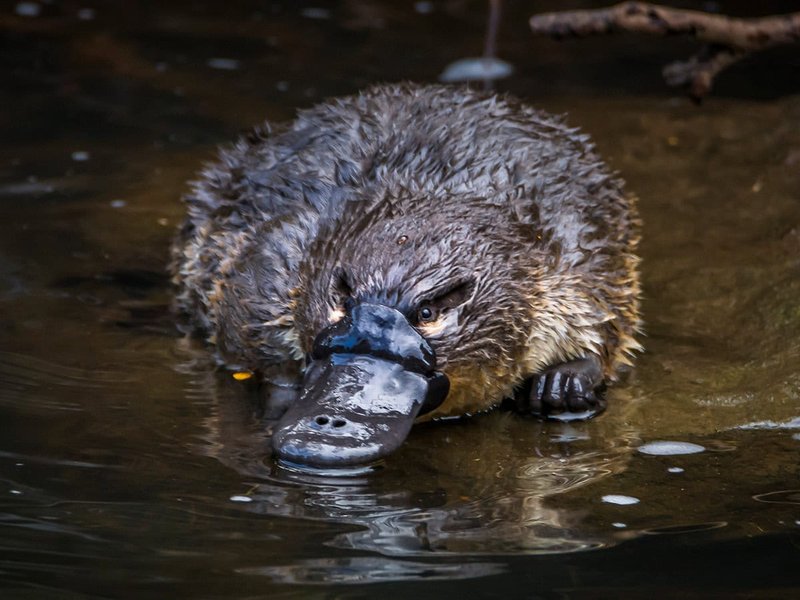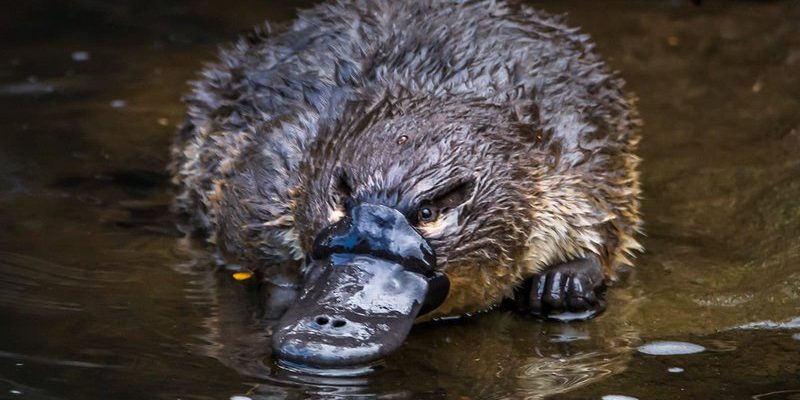
Imagine a creature that’s part duck, part beaver, and part otter. Sounds like something out of a children’s book, right? Well, that curious being exists, and it’s called the platypus. Native to the rivers and streams of eastern Australia, this fascinating animal has a collection of traits that makes it one of the most unique mammals on the planet. It’s not just the looks that set the platypus apart; it has some incredible biological features and behaviors that are as intriguing as its appearance.
The platypus is a monotreme, a rare group of egg-laying mammals, which means it’s a little different from your typical furry friend. With its flat bill and webbed feet, it’s truly an oddball in the animal kingdom. And while they might seem like a mythical creature, the platypus plays a vital role in its ecosystem, serving both as a predator and prey. Let’s dive deeper into what makes the platypus so special!
Physical Characteristics
The platypus is a small, semi-aquatic mammal with some striking physical features. Adults typically weigh between 1.5 to 5.5 kilograms (3.3 to 12.1 pounds) and can measure about 38 to 50 centimeters (15 to 20 inches) long. Its flat, duck-like bill is equipped with electroreceptors that help it hunt underwater. This means the platypus can detect electric fields generated by the movements of prey, like small fish and invertebrates. Isn’t that cool?
The body is covered in dense, waterproof fur, which keeps the platypus warm in cold waters. Interestingly, its feet are webbed, but the webbing retracts when it walks on land, revealing sharp claws that help it dig burrows. You might also notice that the males have venomous spurs on their hind legs, a feature they use in territorial disputes. While it sounds fierce, the venom isn’t deadly to humans—just extremely painful!
Habitat and Range
The platypus thrives in freshwater habitats, primarily in rivers, streams, and lakes across eastern Australia and Tasmania. They prefer areas with plenty of vegetation and shelter, which provide safe nesting sites and abundant food sources. You might find them in peaceful, slow-moving waters where they can dive and forage without much disturbance.
These animals are excellent swimmers and can hold their breath for up to two minutes while diving underwater. They typically hunt for food during the early morning or late afternoon, using their sensitive bills to search for small creatures hiding in the mud and rocks. Their natural habitat also plays a critical role in their survival, as pollution and habitat destruction can have devastating effects on their populations.
Diet and Feeding Habits
The platypus is an *insectivore*, primarily feeding on insects, larvae, crustaceans, and small fish. They are unique in that they don’t have teeth; instead, they use their bill to scoop up food and grind it with their hard, bony plates. The platypus can consume about 15% of its body weight in food each day! That’s like you polishing off a large pizza in one sitting.
When hunting, the platypus dives underwater and uses its bill’s electroreceptors to locate prey by sensing their electric fields. This hunting method is highly effective, allowing them to find food in murky waters where visibility is limited. After a good hunt, they retreat to the surface to enjoy their meal, often sitting on a rock or the riverbank.
Reproduction and Lifespan
During the breeding season, which generally occurs between September and December, male platypuses become quite territorial. After a courtship period, the female lays one to three eggs, which she incubates in a burrow for about ten days. When the eggs hatch, the mother nurses her young by secreting milk from her mammary glands, which the babies lap up, as they can’t suckle. It’s a pretty fascinating, albeit messy, process!
In terms of lifespan, the platypus can live between 10 to 17 years in the wild, though some may live longer in captivity where they are free from predators and environmental threats. As with many species, conservation efforts are crucial because their populations are affected by habitat loss, pollution, and climate change.
Table of Interesting Facts
| Scientific Name: | Ornithorhynchus anatinus |
| Weight: | 1.5 to 5.5 kg (3.3 to 12.1 lbs) |
| Length: | 38 to 50 cm (15 to 20 inches) |
| Habitat: | Freshwater rivers, streams, and lakes |
| Diet: | Insects, larvae, crustaceans, and small fish |
| Average Lifespan: | 10 to 17 years |
Conservation Status
Despite their unique charm, platypus populations face significant threats. The IUCN (International Union for Conservation of Nature) lists them as a species of “Least Concern,” but their populations have been declining in some areas. Habitat destruction due to urbanization, pollution, and climate change all impact their quality of life and food sources. That’s why numerous organizations are working to raise awareness and protect these fascinating creatures.
Efforts to protect the platypus often include river conservation projects, habitat restoration, and public education programs. Every little bit helps, as even small changes in our behavior can positively impact their survival. By supporting initiatives that promote clean water and healthy ecosystems, you’re playing a part in ensuring future generations can enjoy the wonders of the platypus.
The platypus is a remarkable example of nature’s creativity. With its unique blend of features, it captures our imagination while serving an important ecological role. From its quirky appearance to its fascinating hunting skills, there’s so much to appreciate about this extraordinary animal. So next time you hear someone mention the platypus, remember it’s more than just a weird-looking creature—it’s a vital part of Australia’s natural heritage.
FAQ
What does a platypus eat?
The platypus primarily feeds on insects, larvae, crustaceans, and small fish. They hunt by diving underwater and using their sensitive bills to detect electric fields produced by their prey. Interestingly, they don’t have teeth; instead, they use their bill to scoop food and grind it with hard plates in their mouths.
How does a platypus reproduce?
During the breeding season, female platypuses lay one to three eggs, which she incubates for about ten days in a burrow. After the eggs hatch, the female nurses her young by secreting milk, which the babies lap up. This method of feeding is quite interesting as the young cannot suckle like many other mammals.
Are platypuses dangerous?
While the male platypus does carry venomous spurs on its hind legs, they are not considered dangerous to humans. The venom can cause extreme pain but is not lethal. These spurs are primarily used during territorial skirmishes with other males.
How long can a platypus hold its breath?
Platypuses are excellent swimmers, capable of holding their breath for up to two minutes while diving underwater. Their hunting strategy relies on quick, efficient dives, making this ability quite important for catching their prey.
Where can you find platypuses in the wild?
Platypuses are primarily found in freshwater habitats such as rivers, streams, and lakes in eastern Australia and Tasmania. They prefer areas with lush vegetation that provides shelter and abundant food sources.
What is a unique feature of the platypus?
The platypus is one of the few mammals that lay eggs instead of giving birth to live young, which makes it part of a rare group known as monotremes. Additionally, they have a duck-like bill, webbed feet, and are known for their electroreception skills, allowing them to detect prey underwater.
How does pollution affect platypuses?
Pollution poses a significant threat to platypus populations as it contaminates their freshwater habitats. Chemicals and waste can harm their food sources and overall health. Protecting waterways from pollution is crucial for the survival of this unique species.
How long do platypuses live?
In the wild, platypuses typically have a lifespan of 10 to 17 years. In captivity, they may live longer due to the absence of predators and environmental threats. Their longevity highlights the importance of conservation efforts to protect them in their natural habitats.

